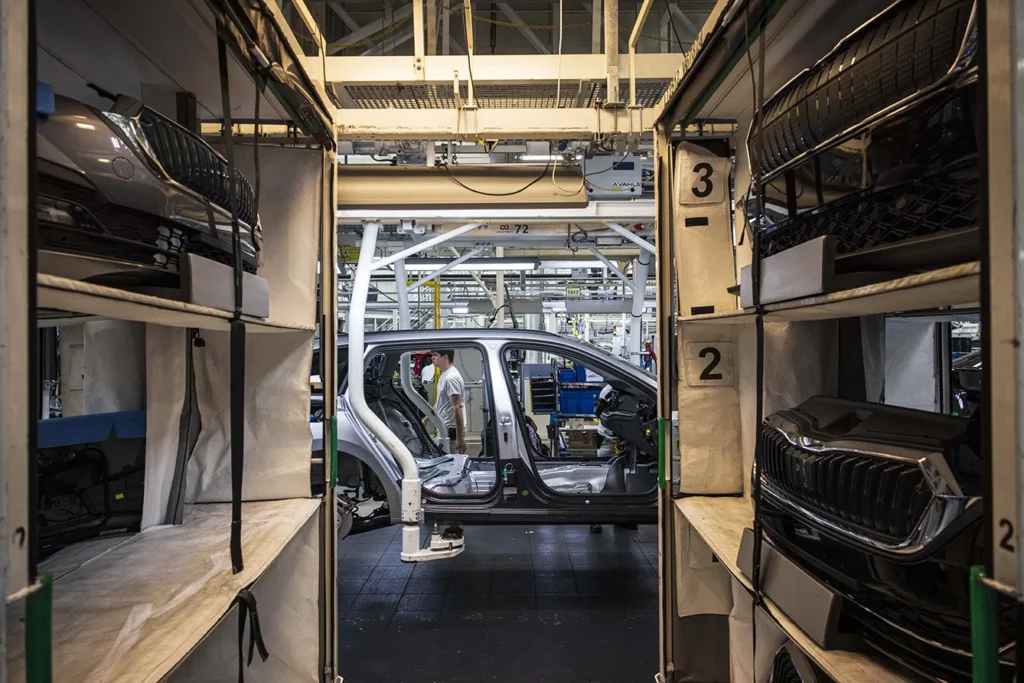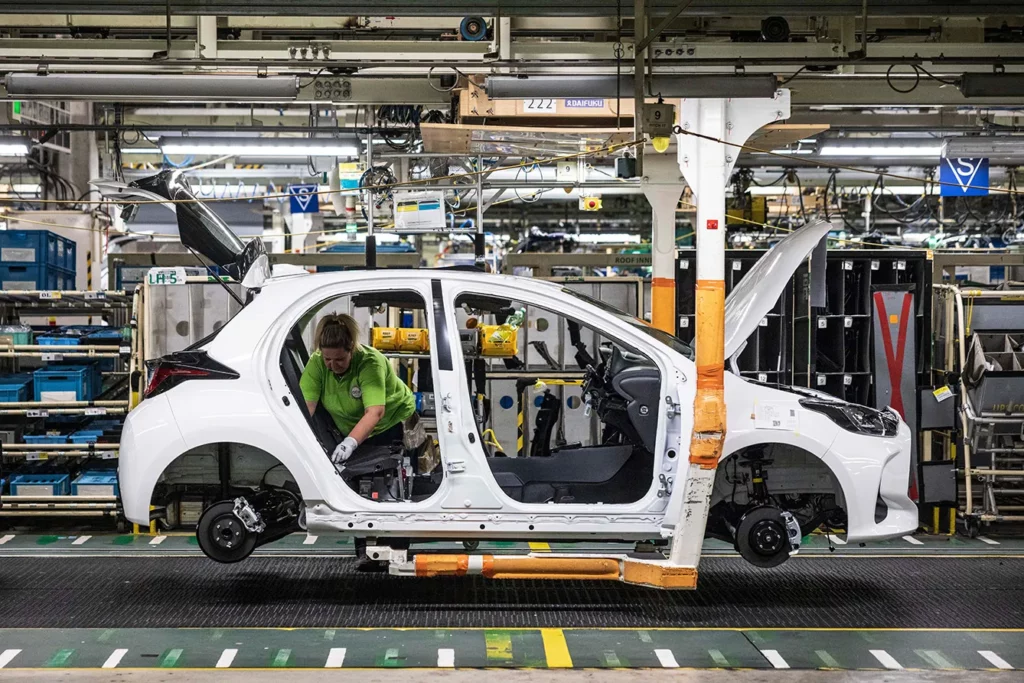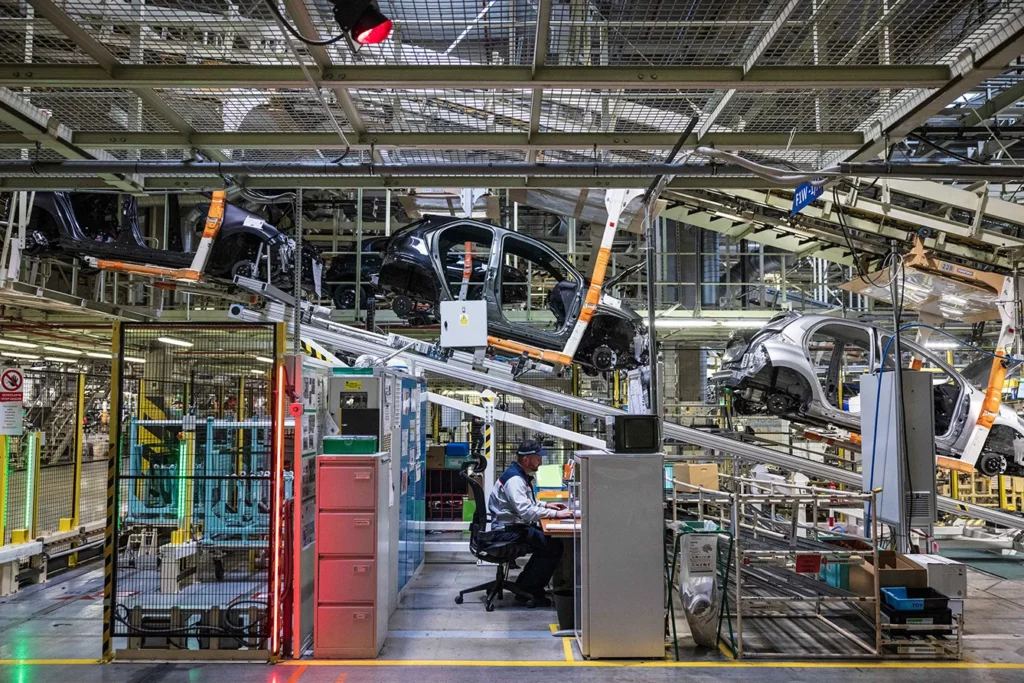Cars have dominated the public space since Henry Ford introduced his Ford Model T to the United States. Since then, the global number of vehicles has grown, reaching 1.474 billion in 2023. About 19% of those vehicles are where mass car usage started: in the United States. That would be the world’s statistics. Let’s look at the Czech Republic, home to the world’s second-oldest automaker. How are the Czechs doing? Do they like their brands, or do they crave foreign pieces?
The automotive industry: the backbone of the Czech economy
First things first: the Czech automotive industry is the pride of the Czech economy. It accounts for roughly 10% of the Czech GDP and contributes over CZK 70 billion (EUR 2.86 billion) to the state budget. The Czech automotive industry directly employs 180,000 people. In downstream industries, it employs another 500,000 workers.
Over 1.25 million vehicles are produced in the Czech Republic annually: 1.2 million are passenger cars. Except for cars, more than 5,300 buses manufactured yearly are worth mentioning. That figure makes the Czech Republic a world leader in bus production per capita.
If we look at more global statistics, the Czech Republic ranks third in the production of passenger cars in the European Union. It then ranks 10th in passenger car production worldwide. All vehicles combined account for 25% of total Czech exports: most of all items.



A car for every household
According to the latest census, the Czech Republic has 10.5 million inhabitants. These are divided into 4.8 million households. These less than 5 million households share 6.4 million passenger cars. Each household then has 1.3 passenger cars. The number of passenger cars on Czech roads in 2022 increased by 132,292.
And even though 130 thousand brand new cars is not a low number, the average age of Czech vehicles has increased by one year to 15.93 years. Thanks to that relatively high number, Czechia has one of the oldest car fleets in Europe. The latest statistics from the European association ACEA show an EU-wide average fleet age of 11.8 years, with Germany at 9.8 years, France at 10.3 years, Italy at 11.8 years, and Slovakia and Poland at 14.3 years, for example.
Motorcycles remain the oldest vehicle category on Czech roads, with an average age of 34.2 years. Tractors follow with an average age of 32.6 years. In total, 8.75 million motor vehicles (cars, trucks, buses, motorbikes, etc.) are registered in the Czech Republic.
Automobile patriots
When it comes to cars, Czechs are patriots. Not only do they like to say so, but statistical data proves it. In the Czech Republic, Škoda is traditionally the best-selling brand. Following Škoda are Hyundai and Volkswagen cars. Toyota, Kia, Dacia, and Peugeot are also popular among Czech drivers.
Not only are Skodas the best-selling cars, but they also hold a solid dominant position: just right under 33%. Hyundai has the second-highest percentage, with 9.7%. Volkswagen is third with 8.3%.
In unit terms, the figure for 2022 is 63,000 Škodas, 18,604 Hyundais, and 16,000 Volkswagens. Although these are 2022 statistics, the same market and sales composition can be observed over the long term. Czechs simply love their Škoda.
The preferred method of propulsion for new cars is also an interesting indicator. Petrol (including hybrids) won by a wide margin, accounting for just under 67% of all new vehicles. Diesel (including hybrids) came a distant second with just under 25%, with the remainder split between different types of alternative propulsion. Petrol+LPG cars fared best, followed closely by pure electric vehicles.
Prospects for the future
Analysts expect everything to stay the same about the presented production structures, purchases, and exports. The only thing that will change will be the numbers. The number of new cars sold in the Czech Republic has steadily fallen over the last few years.
Compared to 2021, there was a 7.15% drop in passenger car sales, while at the same time, for the first time since 2014, fewer than 200,000 new cars were sold. In addition to long-term component shortages, the main reason for this is weakened supplier relationships in the automotive industry due to the fading pandemic and the ongoing war in Ukraine. According to the representatives of the automakers, people are interested in new cars, but the problem is the manufacturers, who cannot increase production capacity. As a result, customers are waiting several months for their cars.
In conclusion, there is only one thing to say: The mood in Czech society has not changed. Czechs will continue to love their Škoda cars, and the age of Czech cars is unlikely to change. Czechs like to take care of their cars and are rather conservative consumers.







